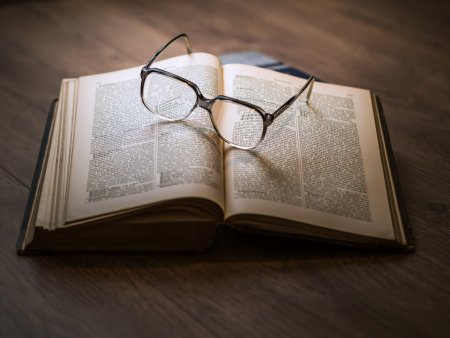переведите на британский плизБИОГРАФИЯ ИВАНА ШИШКИНАИван Иванович Шишкин известный
Переведите на британский плиз
БИОГРАФИЯ ИВАНА ШИШКИНА
Иван Иванович Шишкин известный российский художник (пейзажист, живописец, гравер) и академик.
Родился Иван в городе Елабуга в 1832 году в купеческой семье. 1-ое образование художник получил в казанской гимназии. Проучившись там четыре года, Шишкин поступил в одно из столичных училищ живописи.
После окончания этого училища в 1856 году, образование продолжил в Академии Художеств Петербурга. В стенках данного заведения Шишкин получал познания до 1865 года. Не считая академического рисунка живописец также оттачивал свое мастерство за пределами Академии, в различных живописных местах пригорода Санкт-Петербурга. На данный момент картины Ивана Шишкина ценятся как никогда высоко.
В 1860 году Шишкин получил главную награду золотую медаль Академии. Живописец направляется в Мюнхен. Позже в Цюрих. Везде занимается в мастерских самых известных живописцев того медли. За картину Вид в окрестностях Дюссельдорфа он скоро получил звание академика.
В 1866 году Иван Шишкин ворачивается в Петербург. Шишкин, странствуя по Рф представлял потом свои полотна на различных выставках. Он написал очень много картин соснового леса, посреди наиболее известных Ручей в лесу, Утро в сосновом бору, Сосновый лес, Туман в сосновом лесу, Заповедник. Сосновый бор. Также живописец демонстрировал свои картины и в Товариществе передвижных выставок. Шишкин был членом кружка аквафортистов. В 1873 году художник получил звание доктора в Академии Художеств, а после какое-то время был руководителем учебной мастерской.
ТВОРЧЕСТВО ИВАНА ИВАНОВИЧА ШИШКИНА
Преждевременное творчество
Для ранешних работ мастера (Вид на полуострове Валааме, 1858, Киевский музей российского искусства; Рубка леса, 1867, Третьяковская галерея) отличительна некая дробность форм; придерживаясь традиционного для романтизма кулисного построения картины, верно размечая планы, он не добивается еще убедительного единства образа.
В таких картинах, как Полдень. В окрестностях Москвы (1869, там же), это единство стает уже явной реальностью, прежде всего за счет узкой композиционной и свето-воздушно-колористической координации зон неба и земли, земли (заключительную Шишкин чувствовал необыкновенно проникновенно, в этом отношении не имея для себя одинаковых в российском пейзажном искусстве).
Зрелость
В 1870-е гг. Иван Шишкин заходил в пору бесспорной творческой зрелости, о которой свидетельствуют картины Сосновый бор. Мачтовый лес в Вятской губернии (1872) и Рожь (1878; обе Третьяковская галерея).
Обычно избегая зыбких, переходных состояний природы, живописец Иван Шишкин фиксирует ее высший летний расцвет, достигая умопомрачительного тонального единства конкретно за счет яркого, полуденного, летнего света, определяющего всю колористическую шкалу. Монументально-романтичный образ Природы с великий буковкы неизменно присутствует в картинах. Новые же, реалистические веяния, проступают в том проникновенном внимании, с которым выписываются приметы определенного кусочка земли, уголка леса либо поля, определенного дерева.
Иван Шишкин замечательный поэт не только земли, но и дерева, тонко ощущающий нрав каждой породы [в более типических своих записях он обычно поминает не просто лес, но лес из осокорея, вязов и долею дубов (ежедневник 1861 года) либо лес еловый, сосновый, осина, береза, липа (из письма И. В. Волковскому, 1888)].
С особенной охотой художник пишет породы самые сильные и сильные типа дубов и сосен в стадии зрелости, старости и, наконец, погибели в буреломе. Традиционные произведения Ивана Ивановича такие, как Рожь либо Среди равнины ровныя (картина названа по песне А. Ф. Мерзлякова; 1883, Киевский музей российского искусства), Лесные дали (1884, Третьяковская галерея) воспринимаются как обобщенные, эпические образы Рф.
Художнику Ивану Шишкину идиентично удаются и далевые виды, и лесные интерьеры (Сосны, освещенные солнцем, 1886; Утро в сосновом лесу где медведи написаны К. А. Савицким, 1889; обе там же). Самостоятельную ценность имеют его картинки и этюды, представляющие собой детализованный ежедневник природной жизни.
Ivan was born in the city of Yelabuga in 1832 in a merchant family. The artist received his first education in the Kazan Gymnasium. After studying there for four years, Shishkin entered a Moscow school of painting.
After graduating from this school in 1856, he continued his education at the Academy of Fine Arts of St. Petersburg. Within the walls of this institution Shishkin received knowledge until 1865. In addition to the academic drawing, the artist also honed his skills outside the Academy, in various picturesque places of the suburbs of St. Petersburg. Now the paintings of Ivan Shishkin are valued as high as ever.
In 1860, Shishkin received an important award - the Academy's gold medal. The artist goes to Munich. Then - in Zurich. Everywhere he works in the workshops of the most famous artists of the time. For the painting "View in the vicinity of Dusseldorf" he soon received the title of academician.
In 1866, Ivan Shishkin returned to St. Petersburg. Shishkin, traveling in Russia, then presented his paintings at various exhibitions. He painted a lot of pictures of a pine forest, among the most famous are "Creek in the Forest", "Morning in the Pine Forest", "Pine Forest", "Fog in the Pine Forest", "Nature Reserve. Pinery". Also, the artist showed his paintings in the Association of traveling exhibitions. Shishkin was a member of a circle of aquafortists. In 1873, the artist received the title of professor at the Academy of Fine Arts, and after some time was the head of the training workshop.
THE CREATIVITY OF IVAN IVANOVICH SHISHKIN
Early Creativity
For the early works of the master ("View on the Island of Valaam", 1858, the Kiev Museum of Russian Art, "Felling Forest", 1867, the Tretyakov Gallery) is characterized by some fractional forms; Adhering to the traditional "romanticism" of the "backstage" construction of the picture, clearly marking out the plans, he does not yet achieve a convincing unity of the image.
In such films as "Noon. In the vicinity of Moscow "(1869, ibid.), This unity appears already an obvious reality, primarily due to the subtle compositional and light-air-color coordination of the zones of sky and earth, the soil (the latter Shishkin felt particularly penetrating, in this respect not having himself Equal in the Russian landscape art).
Maturity
In the 1870s. Ivan Shishkin was at the time of unconditional creative maturity, which is evidenced by the paintings "Pine Forest. Mastwood in the Vyatka province "(1872) and" Rye "(1878, both - the Tretyakov Gallery).
Usually avoiding unsteady, transitional states of nature, the artist Ivan Shishkin fixes its highest summer flowering, achieving an impressive tonal unity precisely at the expense of bright, midday, summer light, which determines the entire color scale. Monumental-romantic image of Nature with a capital letter is invariably present in the pictures. New, realistic trends, appear in that penetrating attention with which signs of a specific piece of land, a corner of a forest or field, a particular tree, are written out.
Ivan Shishkin is a wonderful poet not only of soil, but also of wood, which subtly senses the character of each breed [in his most typical records, he usually mentions not just a "forest" but a forest of "sedge, elms and some oaks" (diary of 1861) or "Spruce, pine, aspen, birch, lime tree" (from a letter to IV Volkovsky, 1888)].
With special enthusiasm the artist writes breeds the most powerful and strong type of oaks and pines - in the stage of maturity, old age and, finally, death in the windbreak. Classical works of Ivan Ivanovich - such as "Rye" or "Among the valley of the flat ..." (the painting is named after the song by AF Merzlyakov, 1883, the Kiev Museum of Russian Art), "Lesnye dali" (1884, Tretyakov Gallery) - are perceived as Generalized, epic images of Russia.
Artist Ivan Shishkin equally work out both kinds of views, and forest "interiors" ("Pine trees illuminated by the sun", 1886, "Morning in the Pine Forest" where bears were written by KA Savitsky, 1889, both in the same place). His drawings and sketches, which are a detailed diary of natural life, have independent value.
In 1860, Shishkin received an important award - the Academy's gold medal. The artist goes to Munich. Then - in Zurich. Everywhere he works in the workshops of the most famous artists of the time. For the painting "View in the vicinity of Dusseldorf" he soon received the title of academician.In 1866, Ivan Shishkin returned to St. Petersburg. Shishkin, traveling in Russia, then presented his paintings at various exhibitions. He painted a lot of pictures of a pine forest, among the most famous are "Creek in the Forest", "Morning in the Pine Forest", "Pine Forest", "Fog in the Pine Forest", "Nature Reserve. Pinery". Also, the artist showed his paintings in the Association of traveling exhibitions. Shishkin was a member of a circle of aquafortists. In 1873, the artist received the title of professor at the Academy of Fine Arts, and after some time was the head of the training workshop.THE CREATIVITY OF IVAN IVANOVICH SHISHKINEarly CreativityFor the early works of the master ("View on the Island of Valaam", 1858, the Kiev Museum of Russian Art, "Felling Forest", 1867, the Tretyakov Gallery) is characterized by some fractional forms; Adhering to the traditional "romanticism" of the "backstage" construction of the picture, clearly marking out the plans, he does not yet achieve a convincing unity of the image.
In such films as "Noon. In the vicinity of Moscow "(1869, ibid.), This unity appears already an obvious reality, primarily due to the subtle compositional and light-air-color coordination of the zones of sky and earth, the soil (the latter Shishkin felt particularly penetrating, in this respect not having himself Equal in the Russian landscape art).MaturityIn the 1870s. Ivan Shishkin was at the time of unconditional creative maturity, which is evidenced by the paintings "Pine Forest. Mastwood in the Vyatka province "(1872) and" Rye "(1878, both - the Tretyakov Gallery).
Usually avoiding unsteady, transitional states of nature, the artist Ivan Shishkin fixes its highest summer flowering, achieving an impressive tonal unity precisely at the expense of bright, midday, summer light, which determines the entire color scale. Monumental-romantic image of Nature with a capital letter is invariably present in the pictures. New, realistic trends, appear in that penetrating attention with which signs of a specific piece of land, a corner of a forest or field, a particular tree, are written out.
Ivan Shishkin is a wonderful poet not only of soil, but also of wood, which subtly senses the character of each breed [in his most typical records, he usually mentions not just a "forest" but a forest of "sedge, elms and some oaks" (diary of 1861) or "Spruce, pine, aspen, birch, lime tree" (from a letter to IV Volkovsky, 1888)].
With special enthusiasm the artist writes breeds the most powerful and strong type of oaks and pines - in the stage of maturity, old age and, finally, death in the windbreak. Classical works of Ivan Ivanovich - such as "Rye" or "Among the valley of the flat ..." (the painting is named after the song by AF Merzlyakov, 1883, the Kiev Museum of Russian Art), "Lesnye dali" (1884, Tretyakov Gallery) - are perceived as Generalized, epic images of Russia.
Artist Ivan Shishkin equally work out both kinds of views, and forest "interiors" ("Pine trees illuminated by the sun", 1886, "Morning in the Pine Forest" where bears were written by KA Savitsky, 1889, both in the same place). His drawings and sketches, which are a detailed diary of natural life, have independent value.
-
Вопросы ответы
Статьи
Информатика
Статьи
Математика.
Разные вопросы.
Разные вопросы.
Математика.
Разные вопросы.
Математика.
Физика.
Геометрия.
Разные вопросы.
Обществознание.




